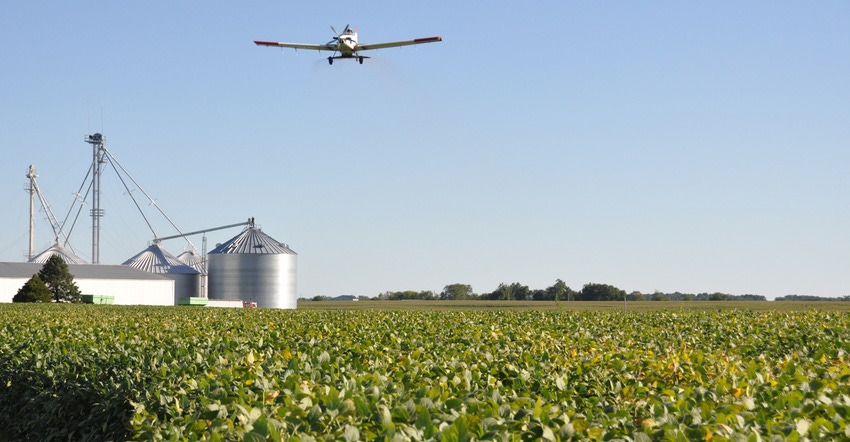July 20, 2017

By Alisha Bower
The more we learn about cover crops through research and farmers’ own experimentation, the bolder managers are getting with letting the cover crop grow right up until or even past planting the main crop.
This system is particularly helpful in soybeans where a cereal rye cover crop can suppress weeds well enough to reduce or eliminate herbicide passes, and has no negative impact on soybean yields. But all of that biomass required to suppress weeds had an unexpected consequence for some farmers: The aerial seeding for next year’s cover crop failed.
In March 2016, farmer Jack Boyer of Reinbeck wrote to Practical Farmers of Iowa’s email discussion list (listserv) of cover croppers about one such failure that he was observing on his farm. “I have a problem with the cereal rye coverage in the areas where last year I ran the early vs. late [cover crop] termination trial. In the areas that were late terminated and crop residue was still present, even today, the rye did not establish. I noticed this last fall, but initially thought that it was due to an error on the aerial applicators part. However, this spring it became more evident that the problem was only in the higher-residue, late-terminated areas.”
Farmers join online discussion
The other farmers on the listserv launched into a debate. Could it be due to a lack of rainfall to increase seed-to-soil contact? More rodents in the high residue areas to munch on the seeds? What could explain how the aerial seeding consistently failed in high-residue strips right next to lower residue strips?
Fred Abels, who farms near Holland in east-central Iowa, reported a similar experience himself. He said, “I had everything terminated calf- to knee-high. And in the one soybean field last fall, there wasn't much growth. I was blaming it on flying it on too soon. I can tell you where we had a waterway built from the soil feathered out to shape the waterway I had really good germination there because there was no "trash" from previous year’s crop. It was about as black and naked soil as you could get.”
It seems that weeds aren’t the only thing the high residue cover crop systems suppress. They also have the potential to suppress the intentionally seeded cover crops for next year. This could be an expensive mistake. With the seed purchase and application, you have paid the full price for cover crops but will receive none of the soil, water and nutrient benefits if the covers do not establish.
Need good seed-to-soil contact
Achieving a good stand of any crop that is aerially seeded into standing corn or soybeans hinges on getting good seed-to-soil contact. If the seed falling from the sky gets caught up on the crops or residue in the field and never reaches the soil, it will not germinate. This is why it’s a best practice to time aerial or broadcast cover crop seeding before soybean leaf drop, so that the seed has a clear shot to the soil unobstructed by fallen soybean leaves.
So how can farmers overcome this challenge and ensure good establishment of the cover crop? In the words of Wade Dooley, a farmer near Albion in central Iowa, “It certainly illustrates a new wrinkle in seeding covers, as we work towards later termination and longer soil coverage. We might have to rotate seeding operations; aerial seed in low residue environments; and incorporate the seed in heavy residue. Definitely, this is something to consider moving forward.”
So if you’re planning to aerially seed a cover crop this August, be sure to get out and look at the field first. If there’s still a lot of residue from the previous year’s crop or early soybean leaf drop, it will safeguard your cover crop investment to pivot to a seeding method with incorporation.
Join the PFI email discussion list
Exclusive access to an active email discussion list (listserv) of farmers interested in experimenting and workshopping production challenges is one of the many benefits of becoming a member of Practical Farmers of Iowa. You can sign up for membership today at the low price of $60 for an entire farm household by visiting practicalfarmers.org/join or call 515-232-5661.
Bower is Midwest cover crops associate for Practical Farmers of Iowa in Ames. Email [email protected].
You May Also Like




